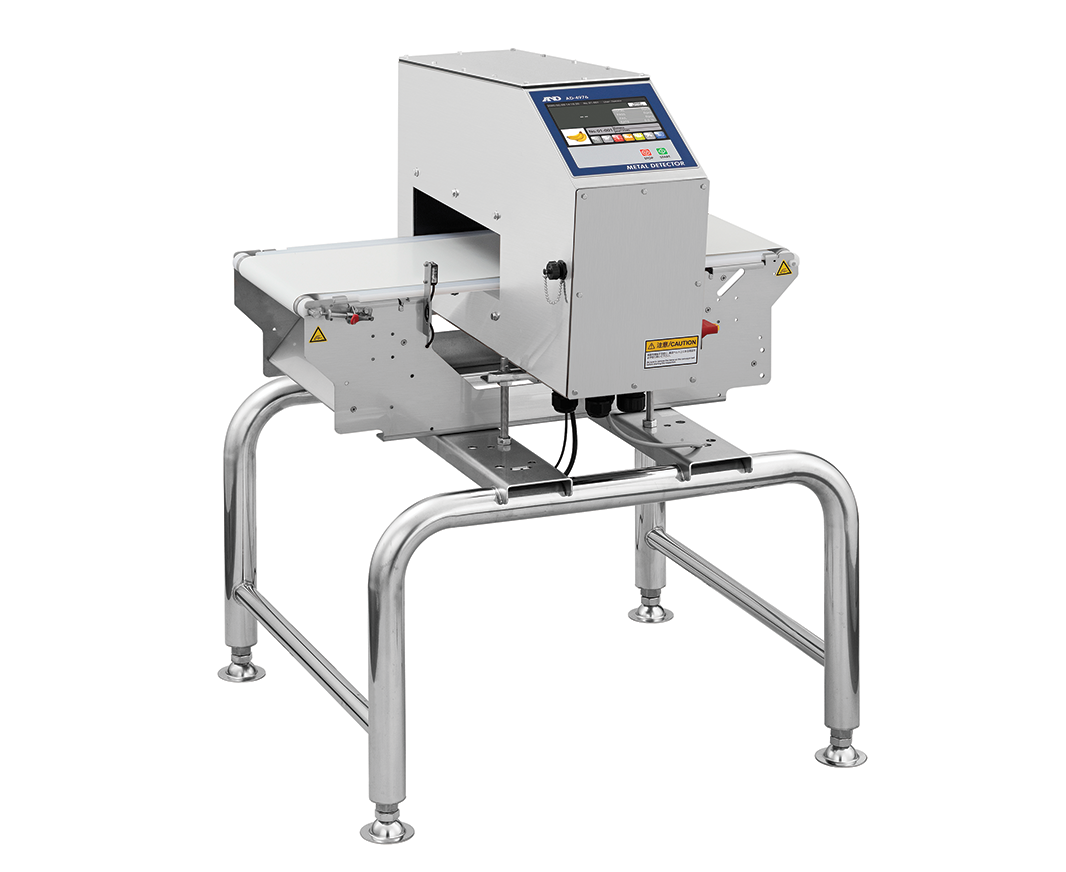Metal detectors are a fundamental tool in the food manufacturing industry, serving as a frontline defense against metal contamination in food products.
Introduction to Metal Detectors in Food Manufacturing
Metal contamination poses a significant risk to food safety, potentially leading to costly recalls, consumer harm, and damage to brand reputation. Metal detectors are designed to identify and remove metal contaminants from food products during the manufacturing process, ensuring compliance with regulatory standards and maintaining consumer trust.
Types of Metal Detectors
Ferrous Metal Detectors: These detectors are primarily sensitive to ferrous metals, such as iron and steel. They utilize electromagnetic fields to detect ferrous particles, making them suitable for detecting metal contaminants in products with high iron content, such as meat and certain vegetables.
Non-Ferrous Metal Detectors: Non-ferrous metal detectors are designed to detect metals that do not contain iron, such as aluminum, copper, and lead. They use different detection principles, such as eddy current induction, to identify non-ferrous particles in food items, including packaging materials and bulk products.
Stainless Steel Metal Detectors: Stainless steel poses a unique challenge for metal detection due to its non-magnetic properties. Stainless steel metal detectors employ advanced algorithms and sensitivity settings to distinguish between stainless steel and contaminants, ensuring accurate detection without triggering false alarms.
Pipeline Metal Detectors: These detectors are specifically designed for use in pipelines and processing equipment, such as pumps and conveyors, to detect metal contaminants in liquid or semi-liquid products. They offer seamless integration into existing production lines and can be customized to meet specific application requirements.
Gravity Feed Metal Detectors: Gravity feed metal detectors are suitable for dry bulk products, such as grains, powders, and granules, that flow through gravity-fed pipelines. They utilize gravity-assisted feeding mechanisms combined with sensitive metal detection technology to ensure thorough inspection and contamination removal.
Conveyor Belt Metal Detectors: Conveyor belt metal detectors are among the most commonly used types in the food industry. They feature a conveyor belt system that transports food products through a detection zone, where metal contaminants are identified and rejected using automated rejection mechanisms, such as air jets or mechanical diverters.
Combination Metal Detectors: Some advanced metal detectors combine multiple detection technologies, such as ferrous, non-ferrous, and stainless steel detection, to provide comprehensive metal detection capabilities. These combination detectors offer versatility and enhanced sensitivity, making them ideal for demanding applications with diverse metal contamination risks.
Benefits of Metal Detectors in Food Manufacturing
Enhanced Food Safety: Food Metal detectors help prevent metal contamination incidents, ensuring that food products remain safe for consumption and free from harmful foreign objects.
Compliance with Regulations: Food manufacturers are required to implement metal detection systems as part of their food safety protocols to comply with industry regulations and standards, such as Hazard Analysis and Critical Control Points (HACCP) guidelines.
Reduced Risk of Product Recalls: By detecting and removing metal contaminants early in the production process, metal detectors minimize the risk of costly product recalls and associated reputation damage.
Improved Quality Control: Metal detectors contribute to quality control efforts by identifying defects, such as metal fragments or foreign bodies, that may compromise product quality and consistency.
Preservation of Brand Reputation: Ensuring the safety and integrity of food products through metal detection helps maintain consumer trust and loyalty, safeguarding the reputation of food brands in the market.
Considerations for Selecting Metal Detectors
Product Characteristics: Consider the type of food product being inspected, its composition, packaging materials, and handling methods to determine the most suitable metal detector technology and configuration.
Sensitivity Requirements: Define the sensitivity levels required for metal detection based on the size and type of metal contaminants that need to be detected. Different products may necessitate varying levels of sensitivity to achieve effective contamination detection.
Production Environment: Assess the production environment, including factors such as temperature, humidity, sanitation protocols, and space constraints, to ensure that the chosen metal detector is compatible with the operational conditions.
Integration with Production Lines: Evaluate how seamlessly the metal detector can integrate into existing production lines without causing disruptions or bottlenecks. Consider factors such as conveyor speed, product flow rates, and compatibility with other equipment.
Maintenance and Support: Choose a metal detector from a reputable manufacturer that offers reliable maintenance services, technical support, and regular calibration to ensure optimal performance and longevity of the equipment.
Also Read: Metal Detectors in Food Packaging: Ensuring Safety and Quality
Conclusion
Metal detectors play a vital role in ensuring food safety, regulatory compliance, and quality control in the food manufacturing industry. With a wide range of metal detector types available, including ferrous, non-ferrous, stainless steel, pipeline, gravity feed, conveyor belt, and combination detectors, food manufacturers have diverse options to meet their specific contamination detection needs.
By understanding the functionalities, benefits, and considerations associated with each type of metal detector, businesses can make informed decisions to protect consumer health, minimize risks, and uphold the integrity of their food products.

